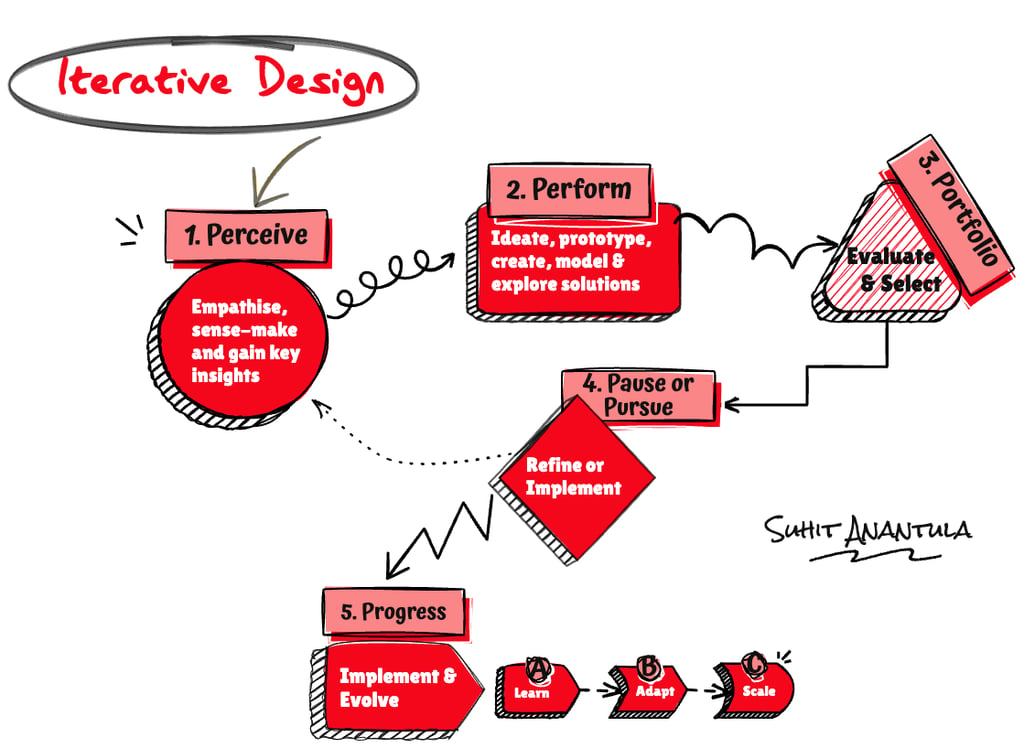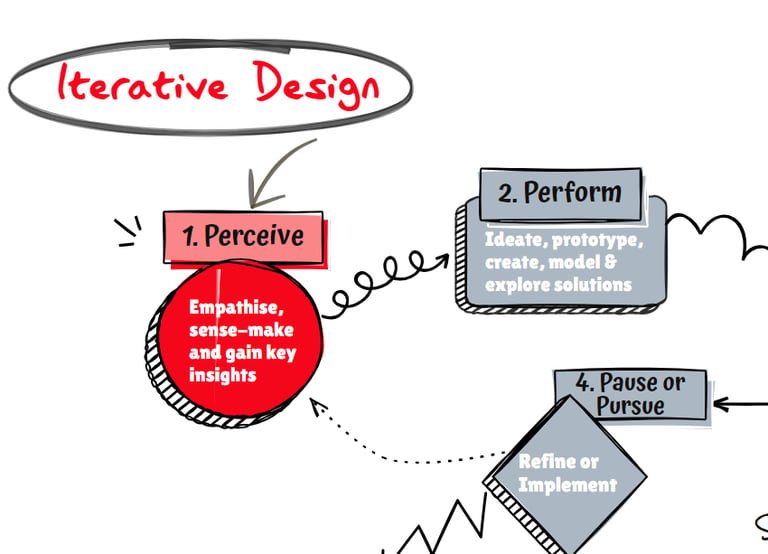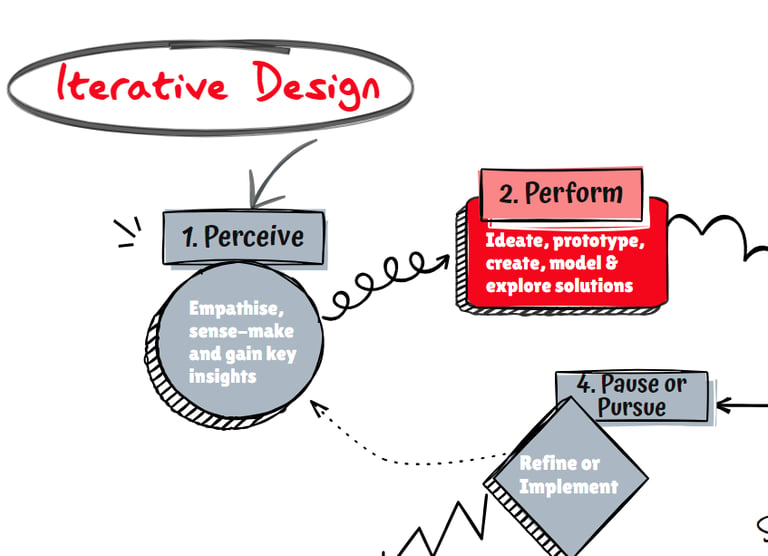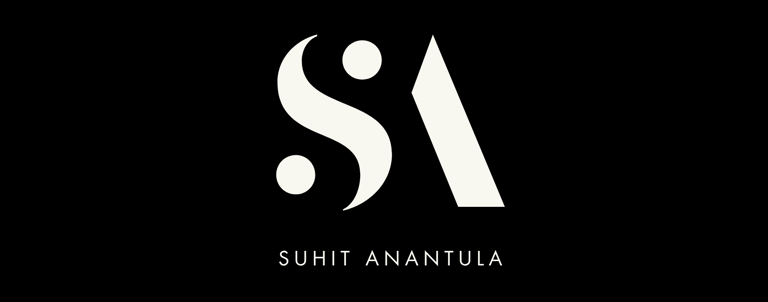Iterative Design
A Simple Yet Powerful Approach to Guiding the Design Process
A flexible, human-centred design approach that emphasises continuous learning and adaptation, empowering designers to navigate complex problems and create innovative solutions


A framework by Suhit Anantula
"Iteration is the key to innovation. You have to try, fail, learn, and try again."
– Jony Ive,
former Chief Design Officer, Apple
Iterative design reduces risk, improves user satisfaction, and drives innovation. Companies that embrace it see 32% higher revenue growth
Source: McKinsey Design Index
Perceive (Empathise, Research, Insights)
Understand the problem or opportunity
Gather information, empathise with users
Identify key insights to guide the next steps
"Empathy is about standing in someone else’s shoes, feeling with his or her heart, seeing with his or her eyes." – Daniel H. Pink
Why: Empathy-driven research ensures solutions are human-centered, leading to higher user satisfaction and adoption rates.


"AI can help us understand people at scale, but it’s up to designers to ensure that understanding is used ethically and empathetically." – John Maeda, Vice President of Design and Artificial Intelligence at Microsoft
Perform (Ideate, Prototype, Test)
Brainstorm, generate ideas
Prototype and test concepts
Explore and refine solutions
"Prototyping is the conversation you have with your ideas." – Tom Wujec
Why: Prototyping and testing reduce the risk of costly mistakes by validating ideas early.


"Generative design allows us to explore thousands of possibilities in the time it used to take to explore one." – Autodesk
Five Key Stages
1) Perceive (Empathise, Research, Insights)
- Understand the problem or opportunity
- Gather information, empathise with users
- Identify key insights to guide the next steps
2) Perform (Ideate, Prototype, Test)
- Brainstorm, generate ideas
- Prototype and test concepts
- Explore and refine solutions
3) Portfolio (Evaluate, Curate, Select)
- Evaluate ideas and prototypes
- Curate a selection of promising solutions
- Choose the best ideas to move forward
4) Pause or Pursue (Decide, Refine, Implement)
- Decide whether to iterate or implement
- Refine solutions or scale them up
- Make strategic decisions about next steps
5) Progress (Learn, Adapt, Evolve)
- Gather feedback, learn from failures
- Adapt and improve solutions
- Continuously grow and evolve designs
